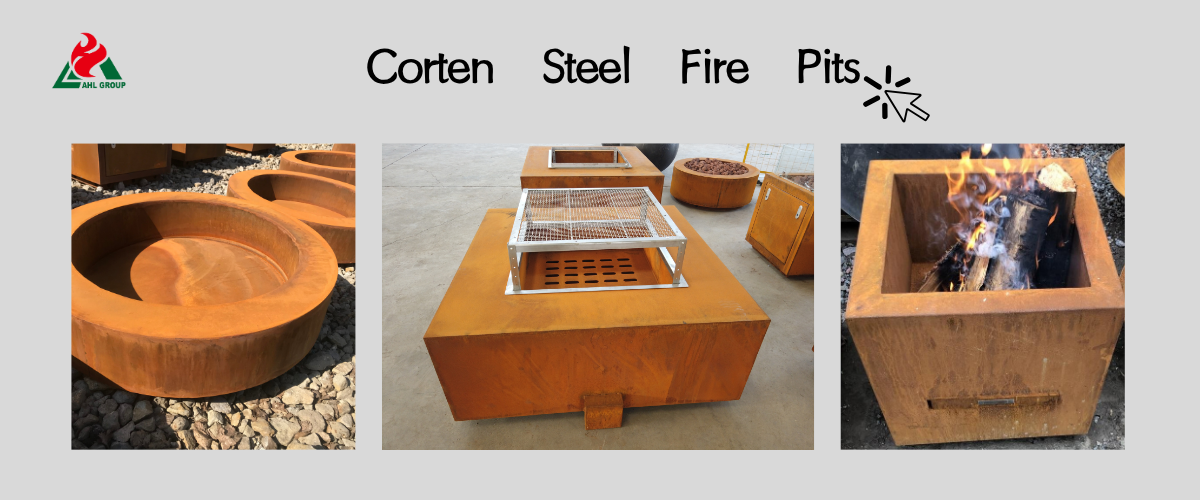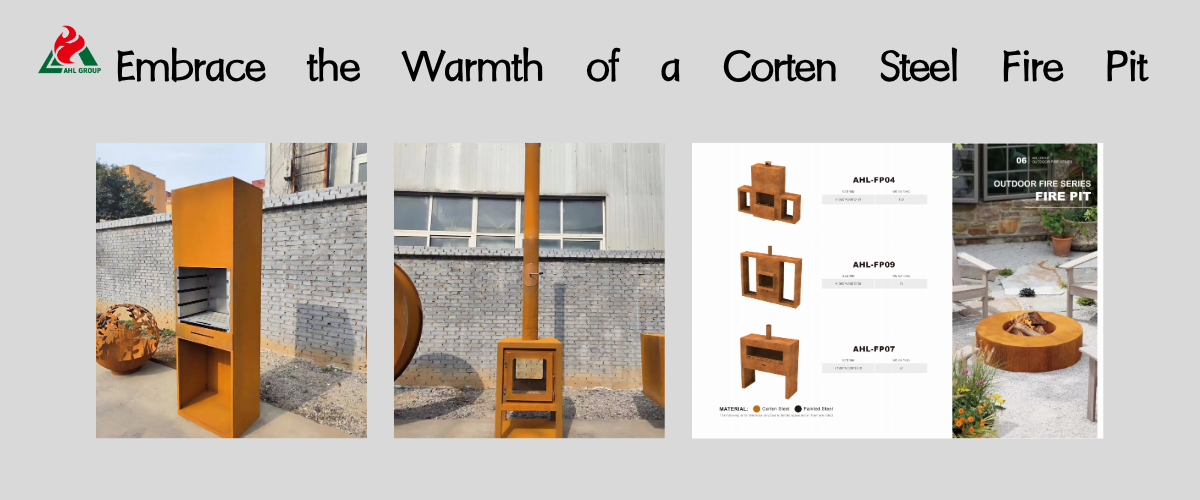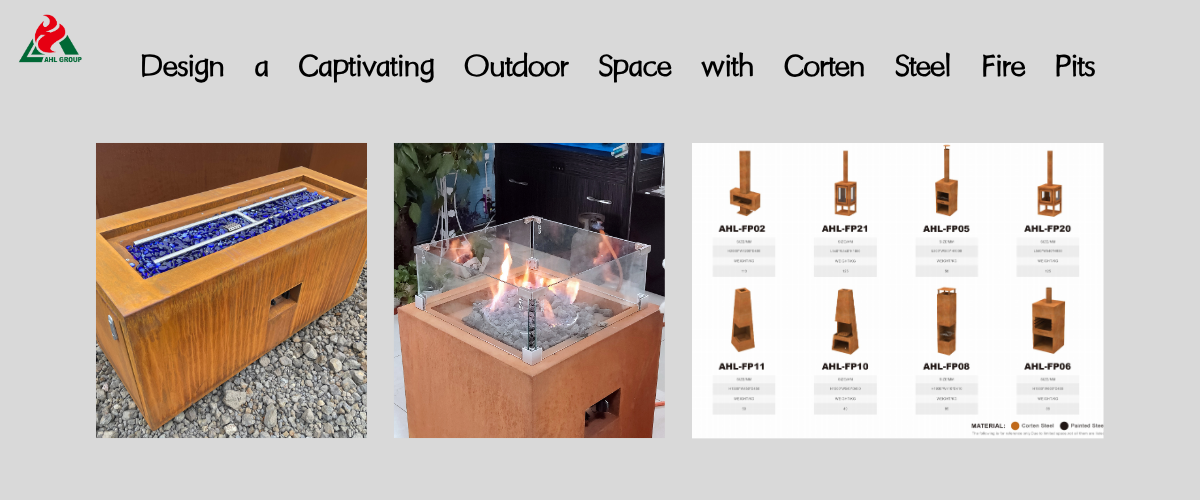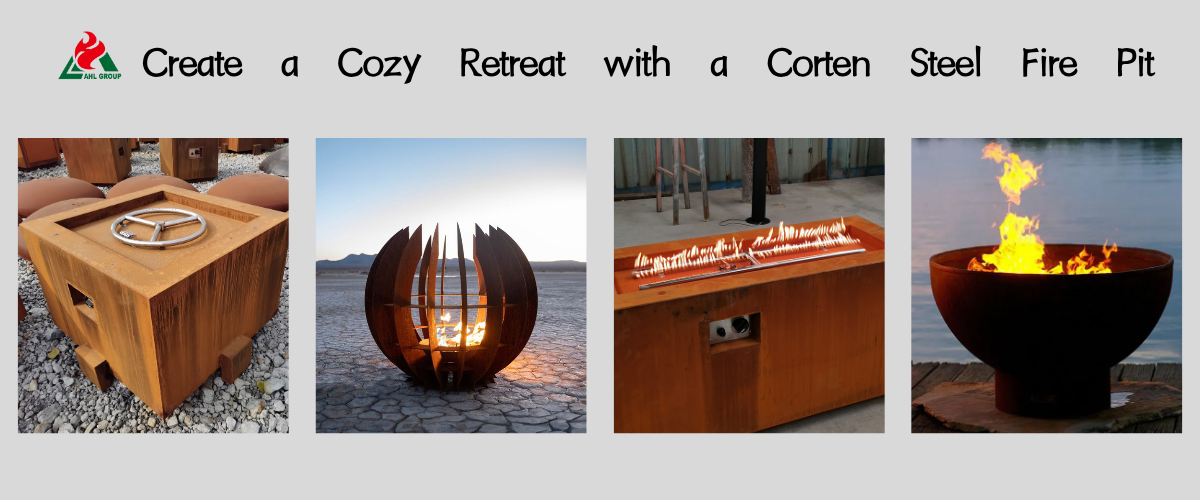Corten steel fire pits represent an investment in enduring modern outdoor living. With their substantial, resilient construction and deep earth-toned patina, these fire pits are engineered to become permanent outdoor furniture that withstands harsh weather. Unlike traditional steel, protecting Corten fire pits isn't about preventing rust—it's about managing factors that could accelerate internal corrosion or compromise the base's integrity.
As AHL Group's experts in Corten steel outdoor installations, we emphasize that protection focuses not on sealing surfaces, but on thoughtful placement and routine maintenance. This guide details core strategies to ensure your weathering steel fire pit remains safe, functional, and aesthetically pleasing for decades to come.

As AHL Group's experts in Corten steel outdoor installations, we emphasize that protection focuses not on sealing surfaces, but on thoughtful placement and routine maintenance. This guide details core strategies to ensure your weathering steel fire pit remains safe, functional, and aesthetically pleasing for decades to come.

Low-Maintenance Characteristics of Weathering Steel
The core appeal of weathering steel lies in its self-protective capabilities. This inherent durability redefines the concept of “protection,” freeing it from the constraints of traditional sealing and painting.
Embracing Natural Weathering Processes
As weathering steel undergoes repeated cycles of wetting and drying, its surface develops a stable, self-sealing rust layer (known as patina). This dense, fixed oxide layer effectively prevents further corrosion of the underlying steel. Therefore, the optimal way to protect the surface is to align with the natural weathering process. Any attempt to seal or paint it often traps moisture, hindering the steel's natural defense mechanism.
The True Protection for Weathering Steel
For weathering steel fire pits, genuine protection hinges on two critical elements:
• Protecting the Base and Surroundings: Manage rust runoff during the initial weathering phase while shielding underlying patios or decks from intense heat.
• Safeguarding Internal Structures: Prevent damage from corrosive substances like damp ashes and accumulated water within the basin.

Practical Protection Strategies
Effective protection requires developing simple, consistent habits, focusing on moisture management and placement to ensure the core structure remains intact.
Strategy 1: Proper Covering Techniques
Although weathering steel does not require rain protection, covering the fire pit when not in use remains a proactive measure to prevent water accumulation and debris buildup.
Selecting the Right Fire Pit Cover
The optimal cover should be durable and allow the steel to breathe.
• Breathable Material: Opt for weatherproof yet permeable vinyl or synthetic fabric covers to prevent internal condensation. Accumulated moisture can cause uneven rust patina or localized corrosion spots.
• Secure Fastening: Covers with straps or elastic bands withstand strong winds, preventing base damage or cover displacement.
• Avoid Complete Sealing: Ensure air circulation beneath the fire pit when covered.
Strategy 2: Proper Ash Management
This is the most critical maintenance step for Corten metal fire pits. Ash is highly corrosive, especially when damp.
Why Damp Ash Damages Steel
Wood ash contains high concentrations of alkali solution (potassium hydroxide), making it strongly alkaline. When mixed with rainwater, ash forms a highly corrosive alkaline slurry. If left stagnant at the bottom of the metal fire pit for extended periods, this slurry chemically erodes the steel, potentially corroding the protective rust layer and accelerating rust progression from the inside out.
• Principle: Always clear ashes promptly after cooling (within 24-48 hours). Never allow prolonged ash accumulation in the fire pit, especially before rainfall.
Strategy 3: Placement Planning
The placement of the outdoor fire pit significantly impacts its performance and the surrounding landscape.
Preventing Excessive Moisture
While weathering steel adapts to outdoor environments, persistent dampness can still cause issues.
• Avoid prolonged shade: Position the fire pit in a well-ventilated area with ample sunlight to ensure the steel dries quickly after rain. Rapid drying is crucial for forming a stable patina.
• Courtyard Protection Measures: During the initial 6-18 month rust formation period, weathering steel's rust runoff may stain concrete, stone, or light-colored pavers. Install a protective layer beneath the fire pit—such as a fire-resistant mat, dark gravel bedding, or metal tray—to collect runoff until the rust layer stabilizes.

Long-Term Protection Strategy
Long-term protection focuses on maintaining, storing, and ensuring your fire pit remains a safe, functional centerpiece for decades.
Invest in a Premium Protective Cover
Over extended use, a high-quality custom cover effectively blocks large debris (leaves, branches) from entering the interior, preventing clogged drainage holes and water retention. We recommend selecting covers specifically designed for AHL Group Corten fire pit models to ensure optimal fit and longevity.
Proper Storage Procedures
Temporary storage is particularly essential if you reside in regions with extremely harsh, rainy, or snowy winter climates.
• Preparation: Thoroughly remove all ashes and ensure the fire pit is completely dry.
• Storage Location: Place the metal outdoor fire pit in a dry area such as a shed or garage, elevated off the ground to prevent moisture absorption. While not strictly necessary for material preservation, this step simplifies spring preparation.
Safe Handling and Operation Guidelines
When moving or cleaning heavy-duty weathering steel fire pits, always use professional lifting equipment or proper techniques to avoid damaging the base or bending edges. Structural damage to the steel will force the rust layer to reform, potentially causing temporary localized strength reduction.

Common Protection Mistakes to Avoid
Understanding what not to do is just as important as following best practices for users of Corten outdoor fire pits.
Chemicals and Cleaners That Damage Weathering Steel
Never use acidic cleaners, harsh abrasives, or rust removers on weathering steel fire pits. These chemicals strip away the protective rust patina, exposing the underlying bare steel and forcing the entire weathering process to restart. For routine cleaning, simply rinse with water using a soft-bristle brush.
Improper Covering and Ventilation Practices
Avoid covering the fire pit with non-breathable plastic sheeting or wrapping it too tightly. This traps moisture, creating a microclimate of condensation droplets inside the fire bowl. Prolonged dampness is detrimental to Corten's rust layer, promoting unstable flaky rust instead of the ideal dense protective coating. Prioritize air circulation at all times.
Conclusion: Gather Around the Warmth of Corten Steel Fire Pits
Protecting your Corten steel fire pit is surprisingly simple. Just understand that its surface needs to breathe, focus maintenance on removing corrosive wet ashes, and ensure proper drainage to eliminate the material's greatest threats. Choosing high-quality, heavy-gauge products from AHL Group means you're laying the best foundation from the start, resulting in an aesthetically pleasing, maintenance-free fire pit that will last for generations.


